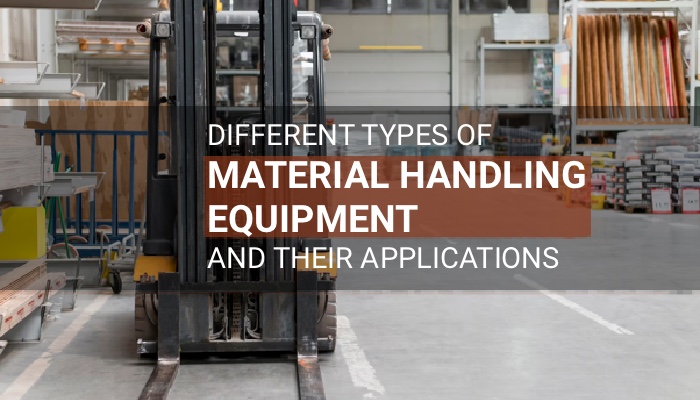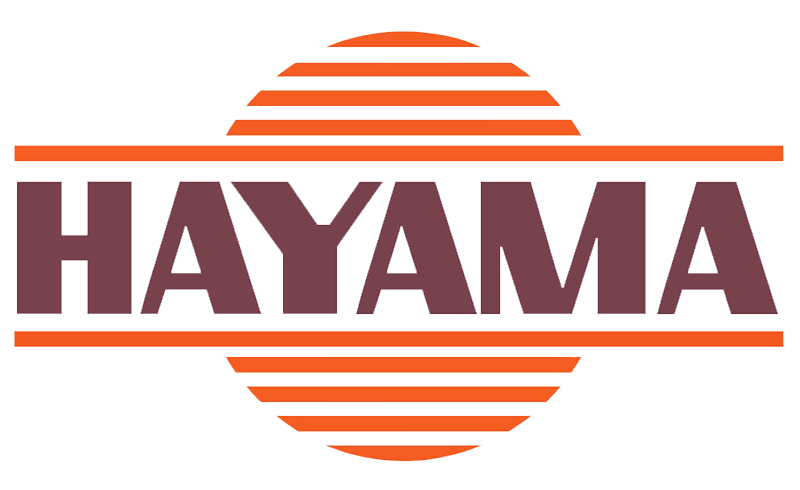
Material handling systems are part and parcelto make, store & secure, move, deliver or dispose of massive materials consistently and competitively from process A to Z of one’s facility. It would be beneficial for entrepreneurs to familiarize themselves with the various solutions available for their company’s needs.
Investing in one may be financially heavy at first, but the production benefit it bears in the long-run far outweighs the capital expense. Whether you are at the start or middle of building your business, here are different material handling systems depending on the business process required.
4 Main Types of Material Handling System
1. Industrial Material Handling Transporter
Among the existing types of material handling equipment, industrial trucks are designed for material transportation. It can come through as a small and hand-operated or large and drivable form. Also, it can function as a non-stacking truck used mainly for transportation or as a stacking truck used for loading and stacking of items.
Common Types:
● Hand & Pallet Trucks – Hand trucks are known as “dollies”, they give its operators the required leverage to roll heavy materials from one place to the other. On another level, pallet trucks are also called “pump truck”. They serve as heavy-duty trolleys through forks that are designed to slip under the pallet, lift, and secure it while taking it to a new location.
● Sideloader Forklift – Can fit between narrow aisles and easily pick up items on either side of a pile. ● Order pickers –These machines can safely lift the operators themselves, so they can access hard to-reach materials that are stored in high places.
Basically, manual and electrical transporters are staples in daily industrial operations. This leads us to another type of material handling system.
2. Storage Handling Equipment
This one allows the organization and storage of spare items, raw/ processed materials, and finished goods as it progresses to the next production or distribution process. It can hold materials for short or long periods. Although stationary, companies frequently maximize its utilization with automated equipment.
Common Types:
• Bins & drawer, shelves and racks– Bins and drawers are used to keep small items that could be easily misplaced when left bare. Whereas, shelves are intended to sort medium-sized items. Meanwhile, racks allow the same orderliness on a wider, higher and heavier scope. With more storage space, floor area can be completely cleared from clutter. Sliding, pallet, push-back, drive in/ drive-through are some developments of this technology.
• Stacking frames – Designed to easily stack palletized piles or super sacks on top of one another. It allows the safe storage or transit of delicate items, thus saving space.
• Mezzanines – An elevated indoor platform that allows additional storage space between the ground and higher floor. These are used to store items vertically, so there is space on the warehouse floor. It comes in free-standing, rack-supported, building-supported, modular and movable forms.
Whether bolted or on wheels, it is evident how materials handling systems are part of large, medium, and small-scale production. Here is another type of system that has provided systematic means of product transfer and/or distribution.
3. Bulk Material Handling Machines
Enables its end user to properly store, distribute/ discharge and process large yet loose materials. These machines are designed to transport items with ease regardless of its form from granular to gigantic and its function whether it be for food minerals or coal mining.
Common Types:
● Silos, Hoppers & Chutes – A trench, pit, or a tall cylindrical tower that protects its contents from liquid, gas, or air exposure. May be made of concrete, steel or fiberglass, it functions as a storage bin until triggered to release through the air slide/ auger for distribution to hoppers and the like. Hoppers are big funnel-shaped objects with openings that shut. They are utilized to pour loose materials into smaller containers. In connection, chutes are narrow and steep channels with closings that open. They are used to move said materials to a lower level.
● Bucket Grain Elevators – Sometimes called “grain legs”. Bucket elevators can vertically move massive materials up or down towards the next production or storage pathway. ● Stackers & Reclaimers – On a much bigger scale, the stacker can unload loose materials to stockyard, while the reclaimer can load loose materials from the stockpiles both without sweat.
Evidently, material handling has evolved tremendously from its earliest pulley, wheel & axle, wedge, screw, inclined plane and lever prototypes. Now, the machines not only function as a unit, but as a cohesive part of an end-to-end system with minimal to zero manual labor. This we will discover more of next.
4. Engineered Material Handling Systems
Also called automated systems. The automated bulk material handling equipment can transfer and store materials.
Common Types:
● Automated Guided Vehicles (AGV), Storage and Retrieval Systems (AS/RS) – AGVs are computer-
operated trucks that transfer materials safely and speedily around the facility in a set direction through its sensors and detectors. Basically, these vehicles are the autonomous version of the industrial material handling transporters. The AS/RS pick up and put back loose items to its intended area. Contrastingly, it picks needed items also from the aisles, racks and shelves. And it can be connected to the company’s software system for real-time inventory management.
Easily, these organizers serve as automated version of the storage handling equipment.
● Industrial Robots – the place where traditional business operations and modern technology meet. Companies utilize this programmable, multifunctional, automatic system to access, move and install materials from/ away the assembly line. This can be found at the preparation, processing and packaging areas. Articulated, Compliance (SCARA), Cartesian, Cylindrical, Delta, Polar and Collaborative are some of the first few that has assisted major production areas.
● Conveying Systems – initially invented in 1700s to transport coal and ore through wooden body, leather belt and manual labor1, this mechanical assembly is now counted on by industries for the automatic transfer of parts, products or packages within/ around one’s facility. Main variations include belt, bucket, chain, hydraulic, roller, screw and pneumatic.
Hayama Industrial Corporation (HIC) has been providing manufacturers from various sectors with bespoke solutions, particularly in the automated preparation, production and packaging of their products since 1979. Its Conveying and Materials Handling System work together in ensuring effective, easy and efficient transport of materials from manufacturing to distribution.
Various Uses of Material Handling System
There is a wide variety of material handling systems, all intended to serve particular industrial purpose. Here are some of its common applications, specifically under the manufacturing, agriculture, logistics, construction and energy generation segments:
1.Making of Material –systematic production of finished goods through the combination of aggregate raw materials such asingredients, chemicals, items, supplies or minerals. The closest illustration of which would be the industrial robots and conveying systems.
2.Secured Storage –safe and secure organization of items, allowing its immediate pull-out and issuance when needed. Bin & drawers, shelves and racks, stacking frames, mezzanines and automated storage & retrieval system (AS/ RS) are some examples.
3. Movement –controlled transfer of raw materials or finished goods inside the material handling equipment, within the area of company, or across other locations of the company to complete the business process. These are not limited to the silos, hoppers, chutes, bucket grain elevator, as well as the stackers & reclaimers.
4.Distribution –timely packaging and delivery of finished goods by the main producer to its end user. Some of which would be hand truck, pallet truck, side loader forklift, order picker and automated guided vehicle (AGV).
5.Disposal –proper removal or recycling of excess ingredient, chemical, item, supply or mineral after every concluded production. Guided by the same “ground rule” of mobilization, bulk material handling machines perform the same work in this business process.
ALSO READ: The Essential Guide to Choosing Conveyor Systems
Different material handling systems are designed to meet the specific needs of companies. Almost, if not all industries rely heavily on this technology to ensure effective and even efficient work operations. The purchase of material handling equipment may be capital-intensive, which is why careful planning, selection and maintenance must be made.
Hayama Industrial Corporation (HIC) is a trusted name in the engineered solutions and fabricated machine industry in the Philippines. We assist our client’s growth through solutions that range from Conveying and Materials Handling System; Civil & Structural; Piping; Electrical, Instrumentation & Automation Works; to Equipment Rehabilitation and Installation. Do you have a certain concept that wish to turn into reality? Send us a message.

Recent Comments